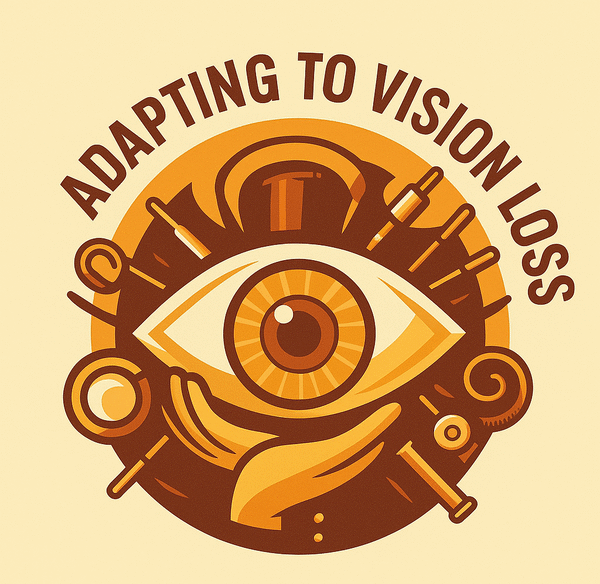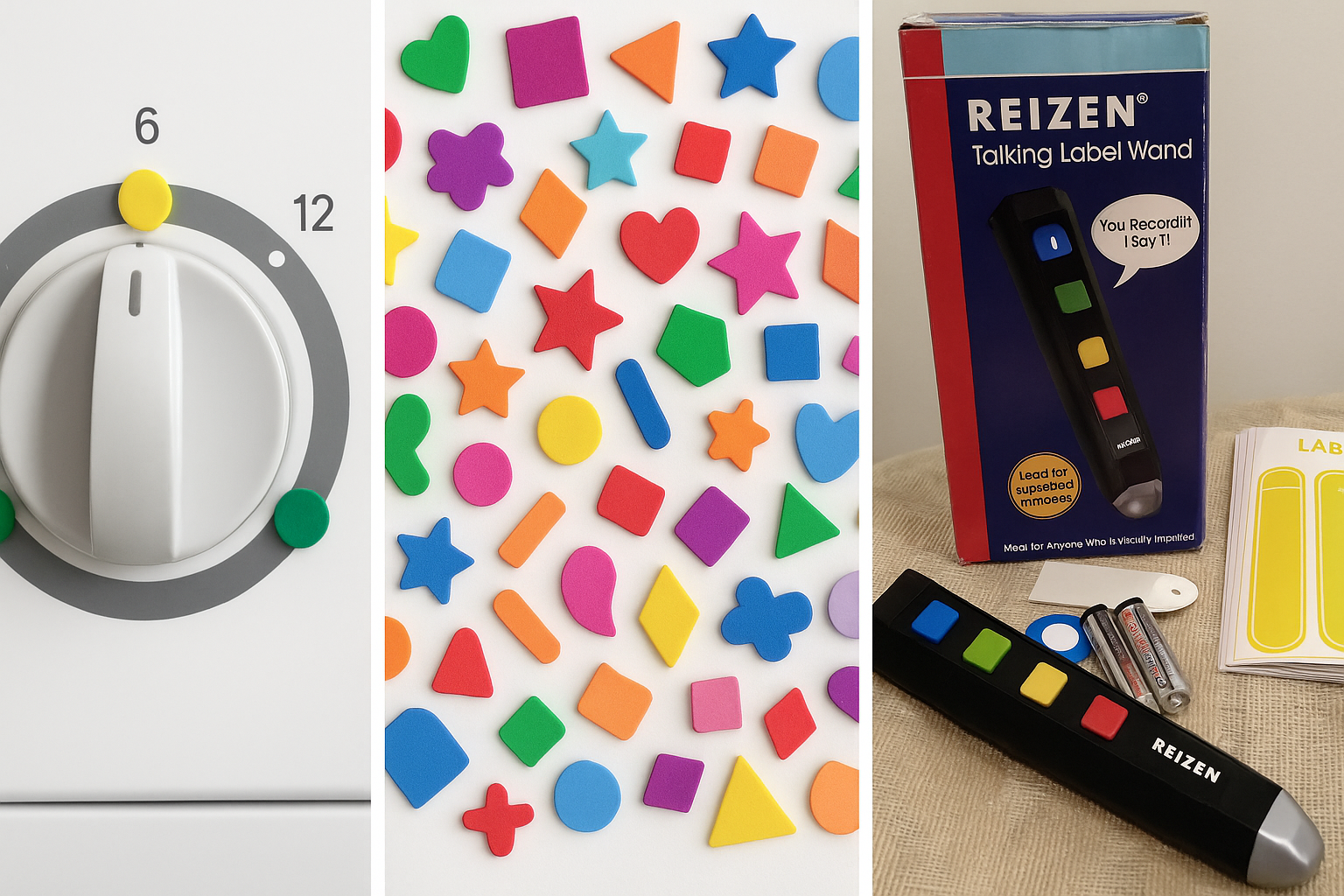How I Use Bump Dots, Talking Labelers, and More to Stay Organized
When I started losing my central vision, the kitchen and laundry room quickly turned into guessing games. Was I grabbing the sugar or the salt? Shampoo or conditioner? And don’t get me started on trying to find the right button on the microwave. That’s when I discovered how a few simple labeling tools—like bump dots and talking tags—could bring order back into my daily routine. In this article, I’ll share what’s worked for me and how you can build your own system without spending a fortune.
🔵 Bump Dots and Tactile Markers
One of the first tools I tried was the humble bump dot. These small adhesive markers can instantly transform a confusing appliance or bottle into something I can identify by touch. They come in different colors, shapes, and sizes—round, square, even pyramid-shaped—so it’s easy to customize them for different tasks.
For example, I have one bright orange dot on the microwave start button, a couple of raised dots on the oven temperature dial, and a small black dot on the shampoo bottle to tell it apart from conditioner. If you still have some usable vision, high-contrast colors can be a game-changer. Otherwise, texture and shape are just as helpful.
Did you know? Bump dots are available in colors like black, white, yellow, red, blue, and even fluorescent orange. This variety makes it easier to find a style that works best for your specific needs.
 A variety of colorful bump dots used both for labeling household items and marking key settings on a washing machine dial.
A variety of colorful bump dots used both for labeling household items and marking key settings on a washing machine dial.
🌟 Kids’ Foam Stickers
Before I discovered bump dots, I experimented with kids’ foam stickers. They come in fun shapes—stars, triangles, squares—and some have glittery or textured surfaces that are easy to feel. I used them on just about everything when I was first adapting.
They may not last as long as commercial bump dots, but they’re affordable, playful, and surprisingly effective. I still use them when I need a quick, temporary label on a new item, like a borrowed appliance or container.
 Foam stickers add a playful yet functional touch, marking appliance buttons for quick identification.
Foam stickers add a playful yet functional touch, marking appliance buttons for quick identification.
🗣️ Talking Labeling Devices
Discovering talking labelers was a complete game-changer. I started with the Reizen Talking Label Wand, which lets me record my own voice labels and replay them by scanning a tag. Suddenly I could keep track of pantry staples, prescription bottles, and even clothing items without relying on someone else to organize them.
Later, I learned about the PenFriend, which works similarly but uses its own system of stickers and tags. Both are excellent devices, and choosing between them really comes down to personal preference and how you like to organize your items.
 Reizen and PenFriend talking labelers with sample tags, offering simple audio labeling solutions for everyday items.
Reizen and PenFriend talking labelers with sample tags, offering simple audio labeling solutions for everyday items.
⠿ Braille Labels
If you read Braille, there’s nothing simpler or faster than using Braille tape or a Braille label maker. Although I don’t rely on Braille much anymore, I’ve seen how effective it can be for people who use it regularly. It’s durable, easy to apply, and works on almost anything—from food containers to electronics.
 Braille labels offer a simple, durable solution for marking everyday items for those who read Braille.
Braille labels offer a simple, durable solution for marking everyday items for those who read Braille.
🍲 Halo Microwave Labels
One of my newer discoveries is the Halo microwave label kit. It’s a set of tactile stickers designed specifically for flat touch-panel microwaves. Each kit includes rings, bars, and dots you can stick to common buttons like Start, Cancel, or Popcorn.
I can’t tell you how helpful these have been—especially when visiting family or using a shared appliance. Instead of guessing or asking for help, I can operate the microwave confidently and safely.
 HALOS tactile icon sticker kits for microwaves and washers, designed to help visually impaired users identify buttons and settings by touch.
HALOS tactile icon sticker kits for microwaves and washers, designed to help visually impaired users identify buttons and settings by touch.
🗂️ Organization Tips That Go Hand-in-Hand with Labeling
Labeling tools are powerful, but they work best when combined with consistent habits. I’ve learned to group similar items together, like keeping all my spices in a single bin or all canned goods in a labeled drawer. I also give everything a “home”—keys always go on the hook near the door, chargers stay in their drawer, and I stick to these spots no matter what. Over time, these habits become second nature, just like reaching for the bump dot on my microwave without thinking.
💡 A Few Words Before You Go
Labeling doesn’t need to be complicated or expensive to make a real difference. Whether it’s a few bump dots, a talking labeling wand, or a well-placed sticker, these simple tools can turn everyday frustrations into smooth routines.
Coming soon: I’ll share a side-by-side comparison of the top talking labeling devices, including Reizen and PenFriend. If you have any favorites, I’d love to hear about them!

